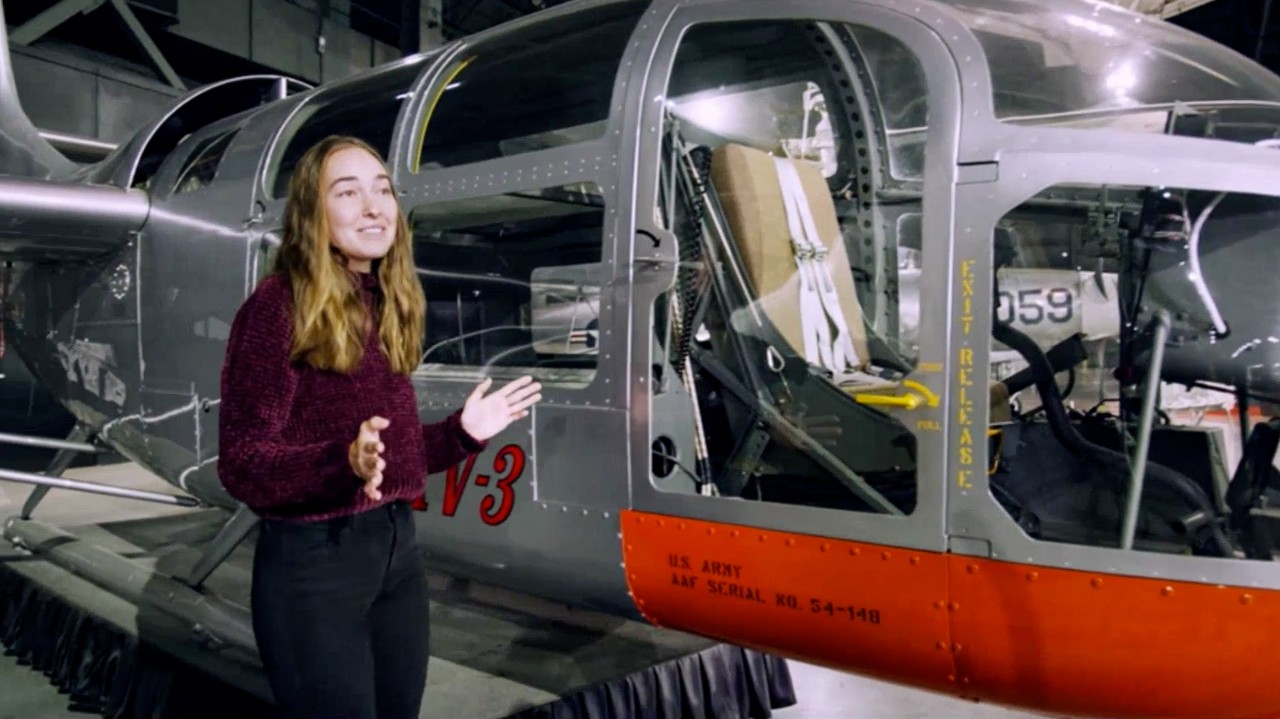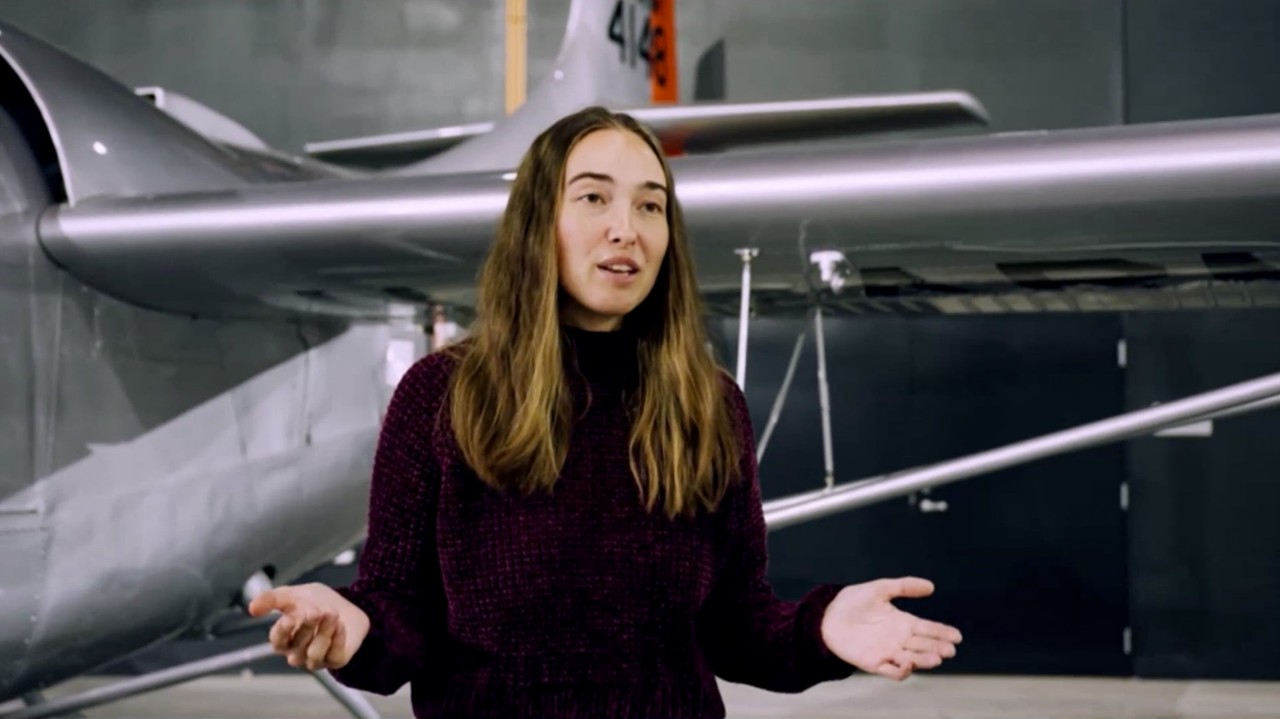
Impossible Engineering: UC student explains tech behind Osprey precursor
Aerospace student explains why Bell XV-3 was groundbreaking
The Science Channel series "Impossible Engineering" turned to University of Cincinnati aerospace engineering student Lynn Pickering to explain the technology behind a flying marvel of aviation: the Bell XV-3.
Pickering, a doctoral student in UC's College of Engineering and Applied Science, helped interpret the groundbreaking technology behind the twin-rotor aircraft that was a precursor of the Bell Boeing V-22 Osprey for Season 10 of "Impossible Engineering."
For the episode, Pickering went to the National Museum of the U.S. Air Force in Dayton, Ohio, to see the last known XV-3, developed in 1955.
"Look at this thing! It looks straight out of a sci-fi film!" Pickering said.
Like the Osprey, the Bell XV-3 could take off vertically. Once airborne, it could rotate its twin propellers vertically, providing the longer range and faster speed of an airplane.
"This aircraft is actually the first attempt at tilt-rotor technology," Pickering said.
Pickering explained the many design and engineering challenges tilt-rotor technology presented. The aircraft were prone to structural and vibration issues.
"This is one of the most exciting pieces of aviation engineering I've ever seen," Pickering said. "The XV-3 might just be one of the most important pieces of aviation engineering. It took this concept of combining two technologies, which a lot of people thought impossible, and proved it was possible."
"Impossible Engineering" is streaming on the Science Channel.

UC aerospace engineering student Lynn Pickering helps explain the engineering behind the world's first tilt-rotor aircraft, the Bell XV-3, for the Science Channel show "Impossible Engineering." Photo/Science Channel
Related Stories
Study traces evolutionary origins of an important enzyme complex
July 9, 2025
MSN highlighted University of Cincinnati Cancer Center research published in Nature Communications that traced the evolutionary origins of the PRPS enzyme complex and learned more about how this complex functions and influences cellular biochemistry.
Murals boost Cincinnati’s vitality, community development
July 9, 2025
Murals have a social and economic impact, says a new study by Hyesun Jeong, assistant professor of urban design in UC's College of Design, Architecture, Art, and Planning.
Veterans urge mindfulness with fireworks
July 8, 2025
Spectrum News 1 and WCPO coverage of UC Veterans Programs & Services in conjunction with Independence Day. Interviews with UC's program director Terence Harrison and veteran-student Crystal Merino.
